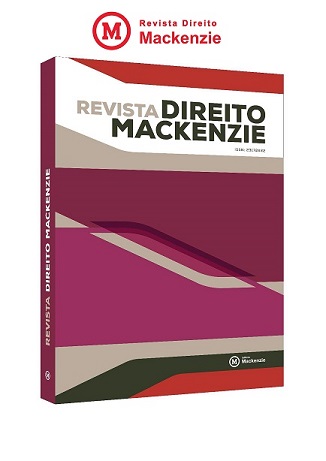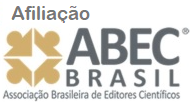TRANSPARÊNCIA VERSUS EXPLICAÇÃO
O papel da ambiguidade na IA jurídica
Resumo
Lidando com técnicas opacas de aprendizagem de máquinas, a questão crucial tornou-se a interpretabilidade do trabalho dos algoritmos e dos seus resultados. O artigo argumenta que a mudança para a interpretação requer um movimento da inteligência artificial para uma forma inovadora de comunicação artificial. Em muitos casos o objetivo da explicação não é revelar os procedimentos das máquinas, mas sim comunicar com elas e obter informação relevante e controlada. Como as explicações humanas não exigem transparência das ligações neurais ou processos de pensamento, as explicações algorítmicas não têm de revelar as operações da máquina, mas têm de produzir reformulações que façam sentido para os seus interlocutores. Este movimento tem consequências importantes para a comunicação jurídica, onde a ambiguidade desempenha um papel fundamental. O problema da interpretação nos argumentos jurídicos, argumenta o artigo, não é que os algoritmos não explicam o suficiente, mas que devem explicar muito e com muita precisão, restringindo a liberdade de interpretação e a contestabilidade das decisões jurídicas. A consequência pode ser uma possível limitação da autonomia da comunicação jurídica que está na base do Estado de direito moderno.
Referências
ALETRAS, N.; TSARAPATSANIS, D.; PREOŢIUC-PIETRO, D.; LAMPOS, V. Predicting judicial decisions of the European Court of Human Rights: a Natural Language Processing Perspective. PeerJ
Computer Science, 2:e93, 2016. Disponível em: https://doi.org/10.7717/peerj-cs.93. Acesso em: 18
nov. 2022.
ANANNY, M.; CRAWFORD, K. Seeing Without Knowing: Limitations of the Transparency Ideal and
its Application to Algorithmic Accountability. New Media & Society, v. 20, n. 3, p. 973-989, 2018.
Disponível em: https://doi.org/10.1177/1461444816676645. Acesso em: 18 nov. 2022.
ASHLEY, K. Artificial Intelligence and Legal Analytics: New Tools for Law Practice in the Digital Age.
Cambridge: Cambridge University Press, 2017.
ASSMANN, J.; GLADIGOW, B. (eds.). Text und Kommentar. Archäologie der Literarischen Kommunikation IV. Leiden: Brill; Fink, 1995.
AUSTIN, J. L. How to Do Things with Words. Oxford: Oxford University Press, 1962.
BATESON, G. Steps to an Ecology of Mind. Chicago: University of Chicago Press, 1972.
BERMAN, D.; HAFNER, C. Obstacles to the Development of Logic-Based Models of Legal Reasoning.
In: WALTER, C. (ed.). Computer Power and Legal Language. Westport: Greenwood Press, 1988.
BINNS, R. Analogies and disanalogies between machinedriven and human-driven legal judgement.
Journal of Cross-disciplinary Research in Computational Law, v. 1, n. 1, p. 1-16, dez. 2020. Disponível em:
https://journalcrcl.org/crcl/article/view/5. Acesso em: 21 nov. 2022.
BOELLSTORFF, T. Making Big Data, in Theory. First Monday, v. 18, n. 10, set. 2013. Disponível em:
https://doi.org/10.5210/fm.v18i10.4869. Acesso em: 21 nov. 2022.
BREIMAN, L. Statistical Modeling: The Two Cultures. Statistical Science 199, v. 16, n. 3, p. 199-215,
ago. 2001. Disponível em: https://www.jstor.org/stable/2676681. Acesso em: 21 nov. 2022.
BUHRMESTER, V.; MÜNCH, D.; ARENS, M. Analysis of Explainers of Black Box Deep Neural
Networks for Computer Vision: A Survey. Computer Science, arXiv:1911.12116, p. 1-22, 2019. Disponível em: https://doi.org/10.48550/arXiv.1911.12116. Acesso em: 21 nov. 2022.
BURRELL, J. How the Machine “Thinks”: Understanding Opacity in Machine Learning Algorithms.
Big Data & Society, v. 3, n. 1, p. 1-12, 2016. Disponível em: https://doi.org/10.1177/2053951715622512.
Acesso em: 21 nov. 2022.
BUSUIOC, M. Accountable Artificial Intelligence: Holding Algorithms to Account. Public Administration Review, v. 81, n. 5, p. 825-836, 2020. Disponível em: https://doi.org/10.1111/puar.13293.
Acesso em: 21 nov. 2022.
CANALE, D.; TUZET, G. La Giustificazione della Decisione Giudiziale. Torino: Giappichelli, 2020.
CARDON, D.; COINTET J.-P.; MAZIERES, A. La revanche des neurons. L’invention des machines
inductives et la controverse de l’intelligence artificielle. Réseaux, v. 211, n. 5, p. 173-220, 2018. Disponível em: https://doi.org/10.3917/res.211.0173. Acesso em: 21 nov. 2022.
CARUANA, R.; LOU, Y.; GEHRKE, J.; KOCH, P.; STURM, P.; ELHADAD, N. Intelligible Models for
Healthcare: Predicting Pneumonia Risk and Hospital 30-day Readmission. In: PROCEEDINGS OF
ACM SIGKDD INTERNATIONAL CONFERENCE ON KNOWLEDGE DISCOVERY AND DATA
MINING, 21, 2015, Sydney. Proceedings […]. Sydney, Association for Computing Machinery, 2015.
Disponível em: https://doi.org/10.1145/2783258.2788613. Acesso em: 21 nov. 2022.
CIMIANO, P.; RUDOLPH, S.; HARTFIEL, H. Computing Intensional Answers to Questions – An
Inductive Logic Programming Approach. Data & Knowledge Engineering, v. 69, n. 3, p. 261-278, mar.
Disponível em: https://doi.org/10.1016/j.datak.2009.10.008. Acesso em: 21 nov. 2022.
CRAWFORD, K. Artificial Intelligence’s White Guy Problem. The New York Times, New York, 25 jun.
Disponível em: https://www.nytimes.com/2016/06/26/opinion/sunday/artificial-intelligences-white-guy-problem.html. Acesso em: 21 nov. 2022.
DEANGELIS, S. F. Artificial Intelligence. How Algorithms Make Systems Smart. Wired, Boone, 2014.
Disponível em: https://www.wired.com/insights/2014/09/artificial-intelligence-algorithms-2/.
Acesso em: 23 jun. 2021.
DOSHI-VELEZ, F.; KIM, B. Towards A Rigorous Science of Interpretable Machine Learning. Statistics,
arXiv:1702.08608v2, p. 1-13, 2017. Disponível em: https://doi.org/10.48550/arXiv.1702.08608.
Acesso em: 21 nov. 2022.
DOSHI-VELEZ, F.; KORTZ, M.; BUDISH, R.; BAVITZ, C.; GERSHMAN, S.; O’BRIEN, D.; SCOTT, K.,
SCHIEBER, S.; WALDO, J., WEINBERGER, D.; WELLER, A.; WOOD, A. Accountability of AI Under
the Law: The Role of Explanation. Computer Science, arXiv:1711.01134v3 , p. 1-21, 2017. Disponível
em: https://doi.org/10.48550/arXiv.1711.01134. Acesso em: 21 nov. 2022.
DREYFUS, H. What Computers Can’t Do. Cambridge: The MIT Press, 1972.
EASTERBROOK, F. H. The Absence of Method in Statutory Interpretation. Chicago Law Review, v. 84,
n. 81, p. 81-97, 2017. Disponível em: https://lawreview.uchicago.edu/publication/absence-method-statutory-interpretation. Acesso em: 21 nov. 2022.
EISENSTEIN, E. L. The Printing Press as an Agent of Change. Communications and Cultural Transformations in Early-Modern Europe. Cambridge: Cambridge University Press, 1979.
ESPOSITO, E. Soziales Vergessen. Formen und Medien des Gedächtnisses der Gesellschaft. Berlin:
Suhrkamp, 2002.
ESPOSITO, E. Artificial Communication? The Production of Contingency by Algorithms.
Zeitschrift für Soziologie, v. 46, n. 4, p. 249-265, ago. 2017. Disponível em: https://doi.org/10.1515/
zfsoz-2017-1014. Acesso em: 21 nov. 2022.
ESPOSITO, E. Artificial Communication. How Algorithms Produce Social Intelligence. Cambridge:
MIT Press, 2021.
FRIED, C. Artificial Reason of the Law or: What Lawyers Know. Texas Law Review, v. 60, n. 1, p. 23-32,
Disponível em: https://informallogic.ca/index.php/informal_logic/article/view/2598/2039.
Acesso em: 21 nov. 2022.
GARFINKEL,H. Studies in Ethnomethodology.Hoboken: PrenticeHall, 1967.
GILPIN, L. H.; BAU, D.; YUAN, B. Z.; BAJWA, A.; SPECTER, M.; KAGAL, L. Explaining Explanations:
AnOverviewofInterpretability of Machine Learning. Computer Science, arXiv:1806.00069v3 , p.
-10, 2018. Disponível em: https://doi.org/10.48550/ar-Xiv.1806.00069.Acesso em: 21 nov. 2022.
GOODFELLOW,I.; BENGIO,Y.; COURVILLE,A.Deep Learning(Adaptive Computation and Machine
Learning). Cambridge: MIT Press, 2016.
HAMMOND, K. Practical Artificial Intelligence for Dummies.Hoboken: Wiley, 2015.
HAO, K. The UK exam debacle reminds us that algorithms can’t fix broken systems. MIT Technology Review, Cambridge, 20 ago. 2020. Disponível em: https://www.technologyreview.com/2020/
/20/1007502/uk-exam-algorithm-cant-fix-broken-system/#:~:text=Tech%20policy-,The%20
UK%20exam%20debacle%20reminds%20us%20that%20algorithms%20can’t,for%20standardization%20above%20all%20else.&text=When%20the%20UK%20first%20set,the%20premise%20
seemed%20perfectly%20reasonable. Acesso em: 2 out. 2020.
HEIMSTÄDT, M.; DOBUSCH, L. Transparency and Accountability: Causal, Critical and Constructive Perspectives. Organization Theory, v. 1, n. 4, p. 1-12, 2020. Disponível em: https://doi.org/
1177/2631787720964216. Acesso em: 21 nov. 2022.
HILDEBRANDT, M.Law for Computer Scientists and Other Folk. Oxford: Oxford UniversityPress, 2020.
HILDEBRANDT, M. The Adaptive Nature of Text-Driven Law. Journal of Cross-disciplinary Research
in Computational Law, v. 1, n. 1, p. 1-15, nov. 2020. Disponível em: https://journalcrcl.org/crcl/article/
view/2. Acesso em: 21 nov. 2022.
HOFFMANN-RIEM, W. Legal Technology/Computational Law: Preconditions, Opportunities and
Risks. Journal of Cross-disciplinary Research in Computational Law, v. 1, n. 1, p. 1-16, nov. 2020. Disponível em: https://journalcrcl.org/crcl/article/view/7. Acesso em: 21 nov. 2022.
HOLZINGER A.; LANGS, G.; DENK, H.; ZATLOUKAL, K.; MÜLLER, H. Causability and explainability of artificial intelligence in medicine. WIREs Data Mining and Knowledge Discovery, v. 9, n. 4, e1312,
abr. 2019. Disponível em: https://doi.org/10.1002/widm.1312. Acesso em: 21 nov. 2022.
LATOUR, B. Pandora’s Hope: Essays on the Reality of Science Studies. Harvard: Harvard University
Press, 1999.
LETTIERI, N.; ALTAMURA, A.; GIUGNO, R.; GUARINO, A.; MALANDRINO, D.; PULVIRENTI, A.;
VICIDOMINI, F.; ZACCAGNINO, R. Ex Machina: Analytical Platforms, Law and the Challenges of
Computational Legal Science. Future Internet, v. 10, n. 5, p. 1-25, 2018. Disponível em: https://doi.
org/10.3390/fi10050037. Acesso em: 21 nov. 2022.
LETTIERI, N. Law, Rights, and the Fallacy of Computation. Jura Gentium, v. XVII, n. 2, p. 72-87, 2020.
Disponível em: https://www.juragentium.org/Centro_Jura_Gentium/la_Rivista_files/JG_2020_2/
JG_2020_2_Lettieri.pdf. Acesso em: 21 nov. 2022.
LIPTON, Z. C. The Mythos of Model Interpretability: In machine learning, the concept of interpretability is both important and slippery. ACM Queue, v. 16, n. 3, p. 31-57, 2018. Disponível em: https://
doi.org/10.1145/3236386.3241340. Acesso em: 21 nov. 2022.
LUHMANN,N. Die Gesellschaft der Gesellschaft. Berlin: Suhrkamp, 1997.
LUHMANN,N.Recht und Automation in der öffentlichen Verwaltung.Berlin: Duncker& Humblot, 1966.
LUHMANN,N. Die Wissenschaft der Gesellschaft. Berlin: Suhrkamp, 1990.
LUHMANN,N. Das Recht der Gesellschaft. Berlin: Suhrkamp, 1993.
LUHMANN,N. Die Kontrolle von Intransparenz. Berlin: Suhrkamp, 2017.
LUM, K.; ISAAC, W. To Predict and Serve. Significance, v. 13, n. 5, p. 14-19, out. 2016. Disponível em:
https://doi.org/10.1111/j.1740-9713.2016.00960.x.Acesso em: 21 nov. 2022.
MARCH, J.G.; SIMON,H.A.Organizations.Hoboken: Wiley, 1958.
MATTARELLA, B.G. La trappola delle leggi:molte, oscure,complicate. Bologna: Il Mulino 2011.
MEHRABI, N; MORSTATTER, F.; SAXENA, N.; LERMAN, K.; GALSTYAN, A. A Survey on Bias and
Fairness in Machine Learning.ACM Computing Surveys, v. 54, n. 6, p. 1-35, jul. 2021. Disponível
em: https://doi.org/10.1145/ 3457607. Acesso em: 21 nov. 2022.
MILLER, T. Explanation in Artificial Intelligence: Insights from the Social Sciences. Artificial Intelligence, v. 267, p. 1-38, fev. 2019. Disponível em: https://doi.org/10.1016/j.artint.2018.07.007. Acesso
em: 21 nov. 2022.
MONROE, D. AI, Explain Yourself. Communications of the ACM, v. 61, n. 11, p. 11-13, nov. 2018.
Disponívelem: https://doi.org/10.1145/3276742. Acesso em: 21 nov. 2022.
MONTAVON, G.; SAMEK, W.; MÜLLER, K.-R. Methods for Interpreting and Understanding Deep
Neural Networks. Digital Signal Processing, v. 73, p. 1-15, fev. 2018. Disponível em: https://doi.
org/10.1016/j.dsp.2017.10.011. Acesso em: 21 nov. 2022.
MUGGLETON, S.; DE RAEDT, L. Inductive Logic Programming: Theory and Methods. The
Journal of Logic Programming, v. 19-20, p. 629-679, maio/jun.1994. Disponível em: https://doi.
org/10.1016/0743-1066(94)90035-3. Acesso em: 21 nov. 2022.
O’HARA, K. Explainable AI and the Philosophy and Practice of Explanation. Computer Law & Security
Review, v. 39, 105474, nov. 2020. Disponível em: https://doi.org/10.1016/j.clsr.2020.105474. Acesso
em: 21 nov. 2022.
O’NEIL, C. Weapons of Math Destruction. New York: Crown Publishing Group, 2016.
OLSEN, J. P. Accountability and Ambiguity. In: Bovens, M.; Goodin, R. E.; Schillemans, T. (eds.). The
Oxford Handbook of Public Accountability. Oxford: Oxford University Press, 2014.
PASQUALE, F. The Black Box Society. The Secret Algorithms That Control Money and Information.
Harvard: Harvard University Press, 2015.
PEARL, J. Causality. Cambridge: Cambridge University Press, 2000.
PEARL, J.; MACKENZIE, D. The Book of Why: The New Science of Cause and Effect. New York: Basic
Books, 2018.
PREY, R. Nothing Personal: Algorithmic Individuation on Music Streaming Platforms. Media, Culture
& Society, v. 40, n. 7, p. 1086-1100, 2018. Disponível em: https://doi.org/10.1177/0163443717745147.
Acesso em: 21 nov. 2022.
QUINLAN, J. R. Induction of Decision Trees. Machine Learning, v. 1, p. 81-106, 1986. Disponível em:
https://doi.org/10.1007/BF00116251. Acesso em: 21 nov. 2022.
ROBBINS, S. A Misdirected Principle With a Catch: Explicability for AI. Minds and Machines, v. 29,
p. 495-514, 2019. Disponível em: https://doi.org/10.1007/s11023-019-09509-3. Acesso em: 22 nov.
ROHLFING, K. J.; CIMIANO, P.; SCHARLAU, I.; MATZNER, T.; BUHL, H. M.; BUSCHMEIER, H.;
ESPOSITO, E.; GRIMMINGER, A.; HAMMER, B.; KERN, F.; KOPP, S.; THOMMES, K.; NGOMO, A.-
C. N.; SCHULTE, C.; WACHSMUTH, H.; WAGNER, P.; WREDE, B. Explanations as a Social Practice: Toward a Conceptual Framework for the Social Design of AI Systems. IEEE Transactions on
Cognitive and Developmental Systems, v. 13, n. 3, p. 717-728, set. 2021. Disponível em: https://doi.
org/10.1109/TCDS.2020.3044366. Acesso em: 22 nov. 2022.
ROSCHER, R.; BOHN, B.; DUARTE, M. F.; GARCKE, J. Explainable Machine Learning for Scientific Insights and Discoveries. IEEE Access, v. 8, p. 42200-42216, 2020. Disponível em: https://doi.
org/10.1109/ACCESS.2020.2976199. Acesso em: 22 nov. 2022
RUDIN, C. Stop Explaining Black Box Machine Learning Models for High Stake Decisions and Use
Interpretable Models Instead. Nature Machine Intelligence, v. 1, p. 206-215, maio 2019. Disponível
em: https://doi.org/10.1038/s42256-019-0048-x. Acesso em: 22 nov. 2022.
RUSSELL, S.; NORVIG, P. Artificial Intelligence: A Modern Approach. Hoboken: Prentice Hall, 2003.
SHMUELI, G. To Explain or to Predict? Statistical Science, v. 25, n. 3, p. 289-310, ago. 2020. Disponível em: https://doi.org/10.1214/10-STS330. Acesso em: 22 nov. 2022.
SILVER, D.; HASSABIS, D. AlphaGo: Mastering the Ancient Game of Go with Machine Learning.
Google DeepMind, 27 jan. 2016. Disponível em: https://ai.googleblog.com/2016/01/alphago-mastering-ancient-game-of-go.html. Acesso em: 23 jun. 2021.
SOBER, E. Ockham’s razors: a user’s manual. Cambridge: Cambridge University Press 2016.
SOLAN, L. Pernicious Ambiguity in Contracts and Statutes. Chicago-Kent Law Review, v. 79, n. 3,
p. 859-888, 2004. Disponível em: https://scholarship.kentlaw.iit.edu/cklawreview/vol79/iss3/22.
Acesso em: 22 nov. 2022.
SUSSKIND, R. The End of Lawyers? Rethinking the Nature of Legal Services. Oxford: Oxford University Press, 2008.
WACHTER, S.; MITTELSTADT, B.; FLORIDI, L. Transparent, Explainable and Accountable AI for
Robotics. Science Robotics, v. 2, n. 6, eaan6080, maio 2017. Disponível em: https://doi.org/10.1126/
scirobotics.aan6080. Acesso em: 22 nov. 2022.
WALTON, D.; MACAGNO, F.; SARTOR, G. Statutory Interpretation. Pragmatics and Argumentation. Cambridge: Cambridge University Press, 2021.
WEINBERGER, D. Our Machines Now Have Knowledge We’ll Never Understand. Wired, Boone, 18
abr. 2017. Acesso em: 23 jun. 2021. Disponível em: https://www.wired.com/story/our-machines-now-have-knowledge-well-never-understand/. Acesso em: 22 nov. 2022.
WEYER, J.; SCHULZ-SCHAEFFER, I. (eds.). Management Komplexer Systeme: Konzepte Für die
Bewältigung von Intransparenz, Unsicherheit und Chaos. Berlin: De Gruyter, 2009.
ZUMTHOR, P. Introduction à la poésie orale. Paris: Seuil, 1972.
Downloads
Publicado
Edição
Seção
Licença
Copyright (c) 2022 Elena Esposito

Este trabalho está licenciado sob uma licença Creative Commons Attribution 4.0 International License.
Os direitos autorais dos artigos publicados na Revista Direito Mackenzie pertencem aos autores, que concedem à Universidade Presbiteriana Mackenzie os direitos de publicação do conteúdo, sendo que a cessão passa a valer a partir da submissão do artigo, ou trabalho em forma similar, ao sistema eletrônico de publicações institucionais. A revista se reserva o direito de efetuar, nos originais, alterações de ordem normativa, ortográfica e gramatical, com vistas a manter o padrão culto da língua, respeitando, porém, o estilo dos autores. O conteúdo relatado e as opiniões emitidas pelos autores dos artigos são de sua exclusiva responsabilidade.











